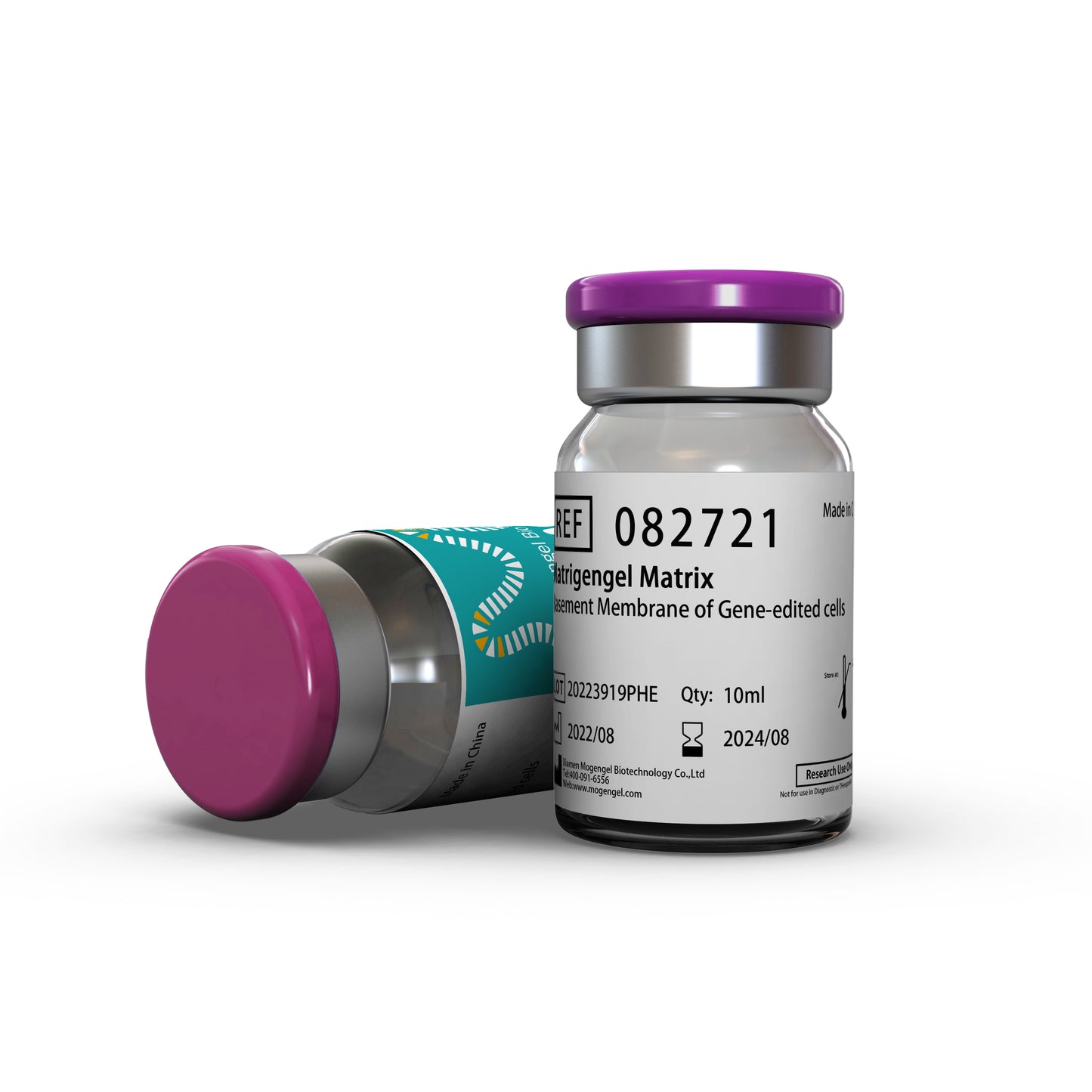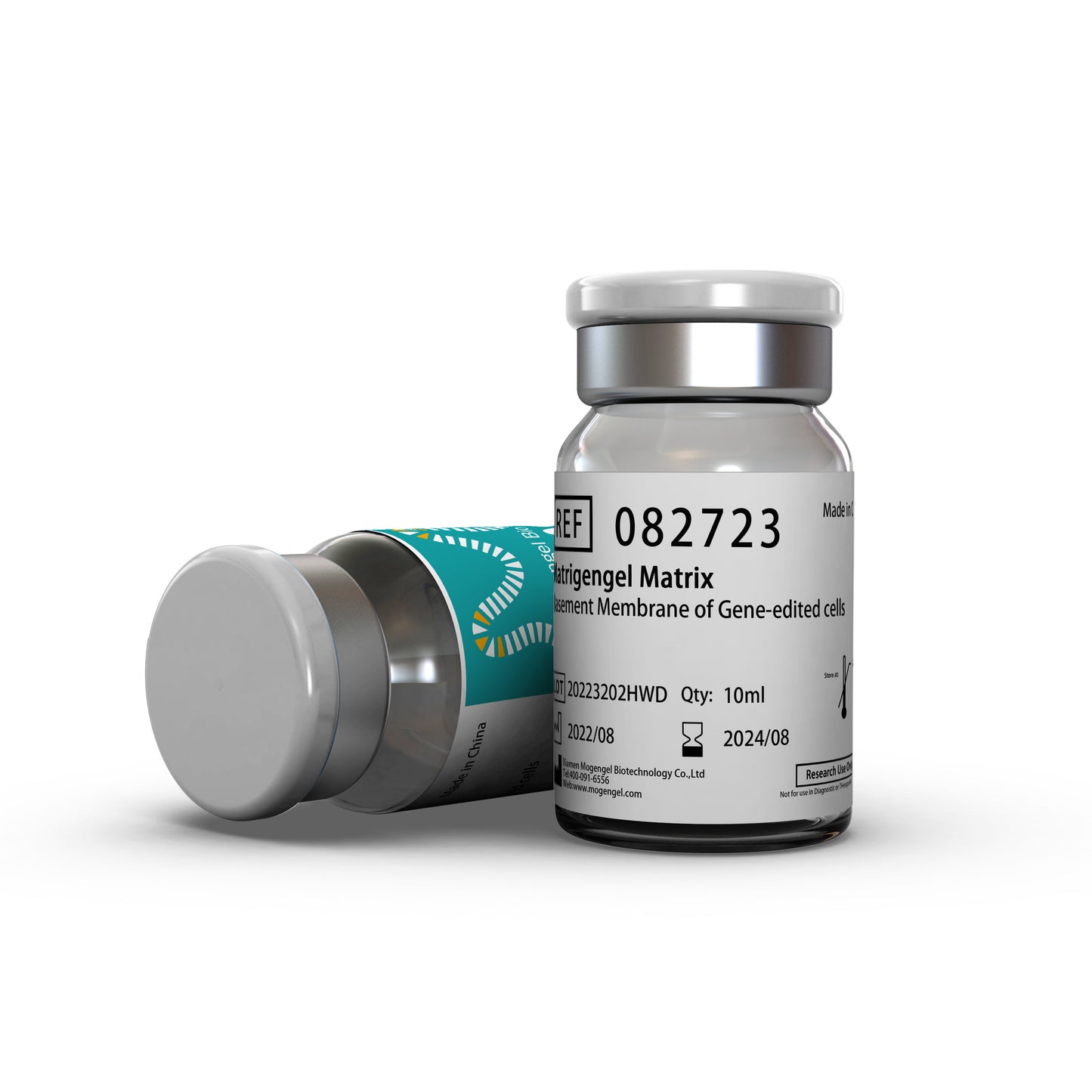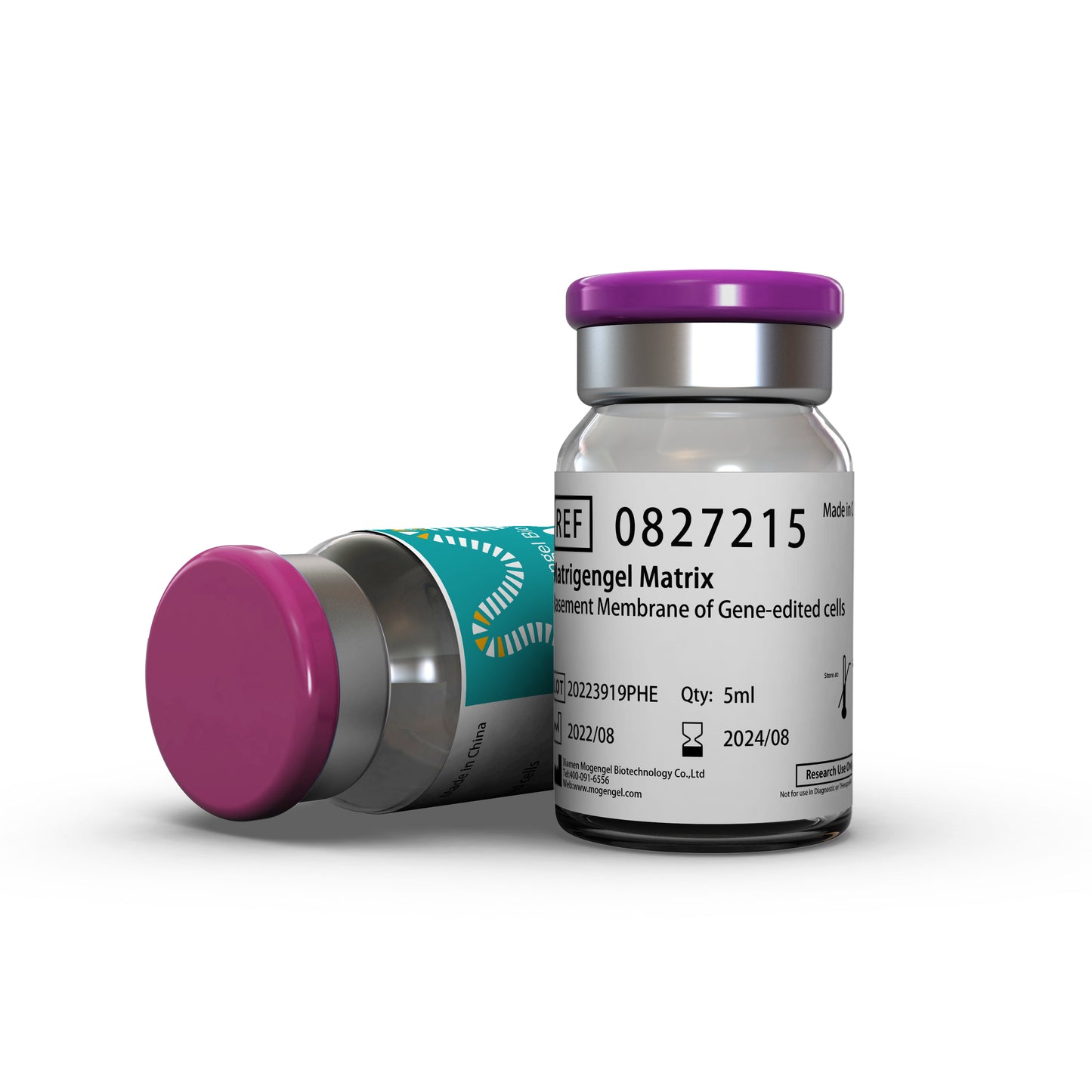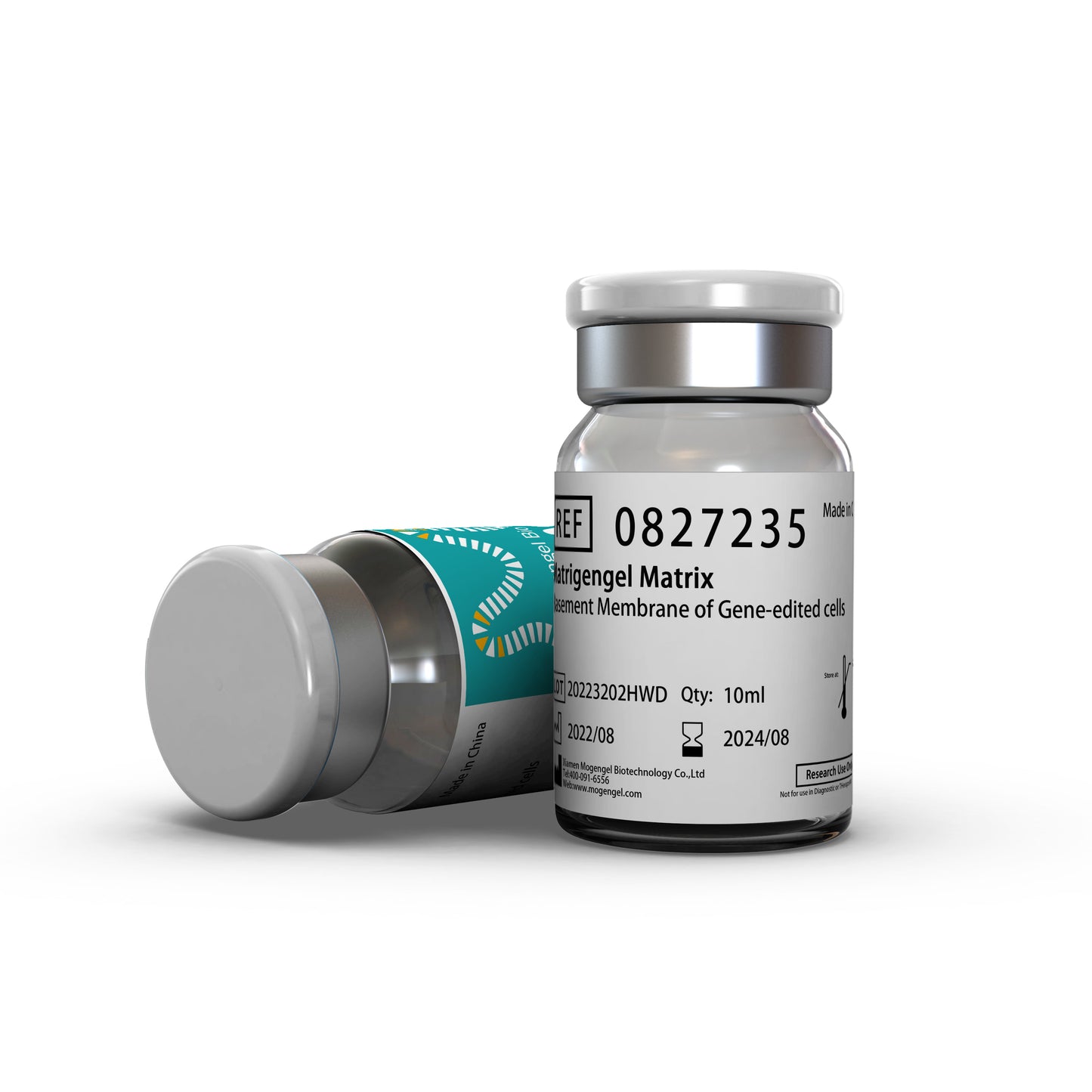



Description
------------------------------------
Data Sheet - Matrix Gel HC GFR-082721
Data Sheet - Matrix Gel HC GFR phenol red free-082723
------------------------------------
Basement membranes are comprised of continuous sheets of a specialized extracellular matrix. It acts an interface between various types of cells, including muscle, neuronal, epithelial, or endothelial cells, along with adjacent stroma. Basement membranes are an essential part in the organization of tissues forming the scaffolding and support for cellular growth and cell layers. They also affect a variety of cellular mechanisms such as adhesion, migration, proliferation, and differentiation. Basement membranes are selectively degraded and regenerated during development and wound healing, forming the base scaffold for tissue reconstruction. Basement membranes also act as a major barrier to invasion by metastatic tumor cells.
Matrix Gel HC GFR (High Concentration, Growth Factor Reduced) is a soluble form of basement membrane that is purified from gene-edited mouse tumor cells grown in LDEV-free mouse populations. Reconstitution into the original basement membrane form occurs at 37℃ and is mainly comprised of laminin, collagen IV, entactin, and heparin sulfate proteoglycan.
MATERIAL QUALIFICATIONS
• Routine screening of mouse colony pathogensby mouse antibody product (MAP) tests
• Testing for bacteria, fungi and mycoplasmato ensure negative results
• Extensive PCR testing for a variety of pathogens including LDEV to ensure strict control of raw materials used in the production process
• Extraction from LDEV-free mouse tumor cells
• Gel stability testing at 37°C for 14 days
• Detection of endotoxin levels using serological methods
• Biological function verification ofeach lot (Organoid culture and differentiation experiments; Subcutaneous tumor formation test; Stem cell culture; Angiogenesis experiment etc.)
COATING PROCEDURES:
• Thaw Matrigengel Matrix overnight at 2-8°C. Refrigerator temperatures may vary, therefore it is recommended to keep Matrigengel on ice in a refrigerator during the thawing process. Thawed Matrigengel solidifies quickly at temperatures above 15°C; when working with Matrigengel, keep it on ice to prevent untimely gelling.
• There are many applications for Matrigengel which require different thicknesses and concentrations. A thick gel is needed for applications such as endothelial cell formation of capillary-like structures (Tube Formation Assay), the differentiation of rat aorta tissue into capillary-like structures (Aortic Ring Assay), epithelial organoid formation, or tumor organoid formation. Some applications, such as propagation of primary cells, require a thin layer coating and not a thick gel; therefore, the thin layer method should be used.
Thick Gel Method:
1. Thaw Matrigengel as stated above.
2. Mix Matrigengel by slowly pipetting solution up and down; be careful not to introduce air bubbles.
3. Pipette 200-300μL per cm2 onto the growth surface.
4. Place coated object at 37°C for 30 minutes.
5. Coated objects are ready for use.
Thin Layer Method (non-gelling):
1. Thaw gel as stated above.
2. Mix gel by slowly pipetting solution up and down; be careful not to introduce air bubbles.
3. Dilute gel to desired concentration in cold serum-free medium. A 1:100 dilution is recommended for the propagation of primary cells. Empirical determination of the optimal coating concentration for your application may be required.
4. Add a sufficient amount of solution to cover the entire growth surface area. A volume of 300μL per cm2 is recommended.
5. Incubate coated object at room temperature for one hour.
6. Aspirate coating solution and immediately plate cells. Do not allow coated surface to dry out.
Background
2D or 3D cultures related to cell proliferation or differentiation, as well as study of cell morphological. Commonly used experiments are on cell invasion, angiogenesis and organoid culture, among others.



